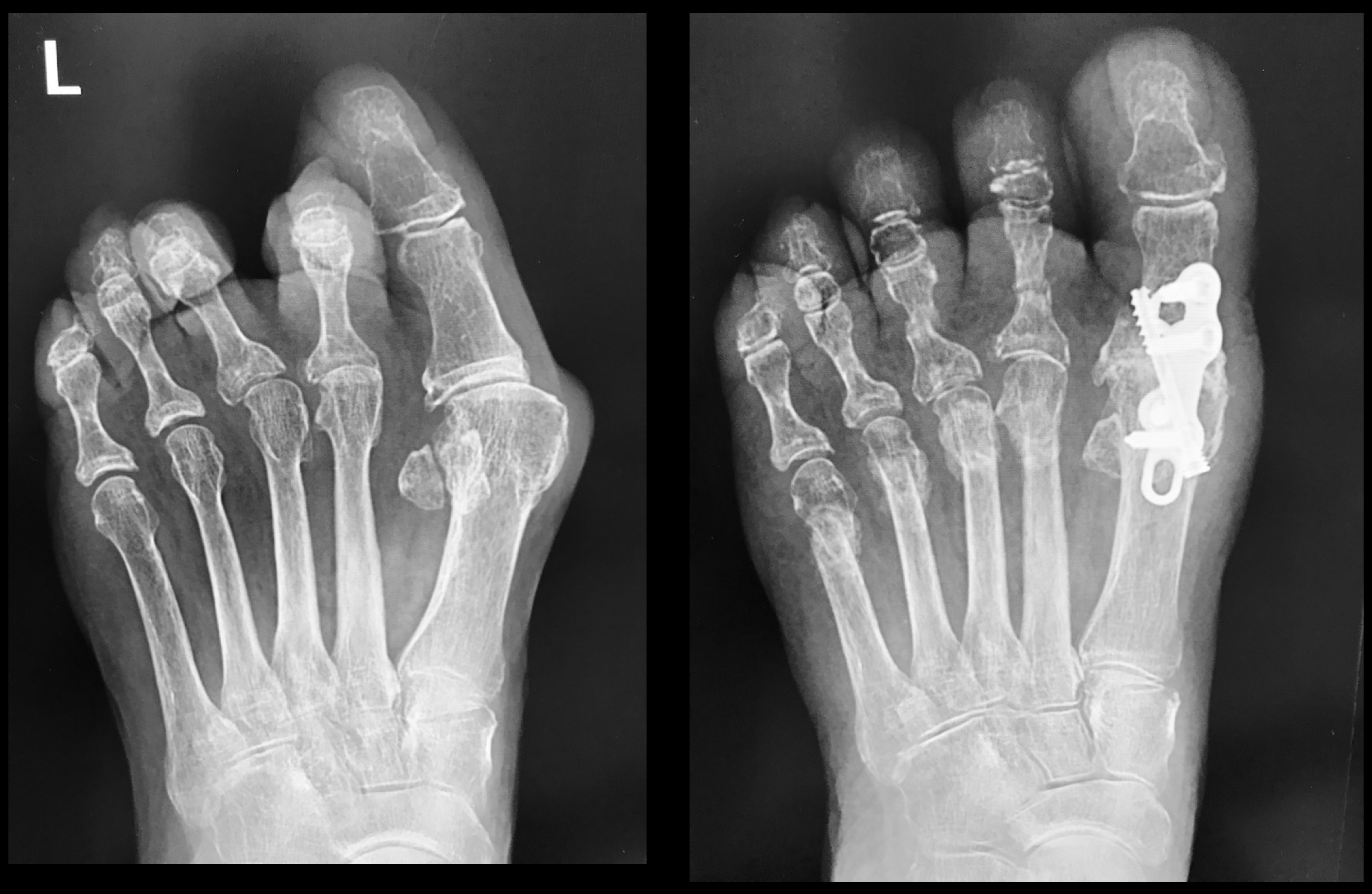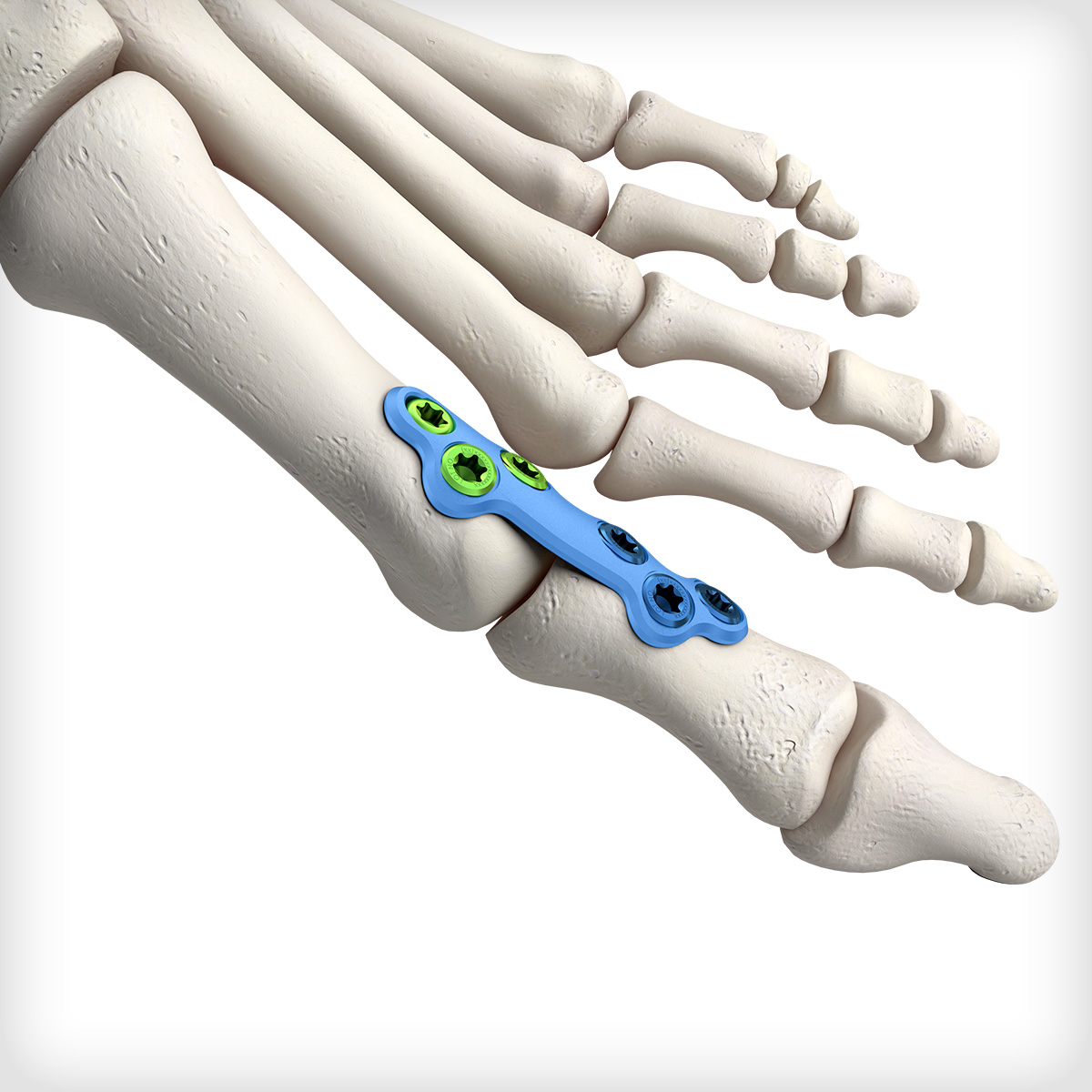Hallux Rigidus (Stiff Big Toe)
Hallux Rigidus
(Stiff Big Toe)
What is Hallux Rigidus
(Stiff Big Toe)
The main sign of this ailment is a stiff big toe, or hallux rigidus in Latin. The joint where your big toe (hallux) joins your foot is impacted by this particular form of degenerative arthritis.
When the cartilage lining the tips of the bones in your big toe joint is worn away or injured, this ailment develops. The joint space becomes smaller as a result. Additionally, it may cause abrasive bone spurs. These are tiny, pointy bone growths.
Hallux rigidius can afflict anyone, although it usually strikes those in their 30s to 60s.
Continue reading to discover the causes of and treatments for hallux rigidus.
Symptoms of hallux rigidus
Symptoms that are initially mild can gradually get worse over time.
Early warning signs include:
- Your big toe feels sore and tight when you move it.
- Inflammation and oedema (swelling) near the joint.
- Discomfort and stiffness get worse during cold and wet weather.
As the situation worsens, you could also observe:
- Pain, even when resting.
- A significant lump can develop on the top of your foot.
- Unable to bend your big toe.
- Limping
If your symptoms make you walk with a limp or otherwise differ from how you normally walk, you could also have discomfort in your hips, lower back, or knees.
Diagnosis
Your doctor will first examine your foot if you have hallux rigidus symptoms. To rule out any additional potential reasons of your symptoms, they might slightly move your big toe.
Your doctor might ask for an X-ray of your foot or toe depending on what they discover during the examination. They will be able to see any harm to your big toe’s joint as a result.

Causes
Although there is no recognised cause of hallux rigidus, there are a number of risk factors. Risk elements consist of:
- Family History – It seems that having a family member with the illness increases your chance of getting it yourself. This could result from inheriting a certain foot type or gait pattern that can cause the disorder.
- Being Female – In females, hallux rigidus is more prevalent. A 2009 cross-sectional study on the demographics of hallux rigidus included 110 patients, and 66% of them were female.
- Abnormal foot anatomy – Your risk may be increased if your foot is structurally abnormal, such as having a long or high first metatarsal bone.
- Certain medical conditions – Hallux rigidus can be brought on by accidents like stubbed toes or big toe joint sprains.
- Overuse – The big toe joint might become overused if you crouch and squat frequently. People who work in specific occupations or engage in activities that put a lot of strain on the joints are more likely to acquire the illness.
- Injury – Hallux rigidus can be brought on by osteoarthritis and inflammatory diseases like gout and rheumatoid arthritis.
Home Treatments
There is no method for an individual to stop the progression of hallux rigidus. However, there are a number of things you may do to lessen the discomfort and swelling in your big toe.
At home, try the following:
- Use heat and cold frequently throughout the day.
- Alternate between using warm and cold water to soak your feet.
- Use Ibuprofen and other non-steroidal anti-inflammatory medications.
- Avoid high impact, like running.
- To avoid your big toe bending excessively, put on supportive closed-toe shoes with solid soles.
Ask your doctor about corticosteroid injections if you discover that you’re still experiencing a lot of discomfort and inflammation. These may provide further comfort.
Treatment
You can get advice from your podiatrist or podiatric surgeon on both non-surgical and surgical treatments for this disease. Depending on how serious your illness is, there are various forms of surgery for hallux rigidus. Treatment is possible through the NHS but wait times can be substantial.
Cheilectomy
Surgery of this kind is utilised to address minor to moderate injury. It entails trimming any bone spurs. Another operation called an osteotomy may be combined with a cheilectomy. By cutting the bone, you can move your big toe and release pressure on the top of the joint.
Interposition arthroplasty
Moderate to severe hallux rigidus is treated with this treatment. As opposed to joint fusion or replacement, it preserves the joint. Joint resurfacing is another name for it.
A spacer is inserted between the bones to reduce contact after some of the damaged bone is removed during the surgery. The spacer could be created using cartilage substitutes, donor tissue, or tissue from your foot.
Arthrodesis
An alternative name for this procedure is joint fusion. It is used to treat the severe joint injury caused by advanced hallux rigidus.
The treatment involves removing the affected cartilage. Screws are used to affix the two bones. The bones eventually fuse together. Although this kind of surgery lessens pain, it also permanently limits the big toe’s range of motion.

Arthroplasty
This procedure involves replacing a joint. It involves swapping either one or both of your joints for synthetic ones made of metal or plastic. This procedure aims to alleviate your symptoms while keeping your joint mobile.
Because there are various hazards associated with arthroplasty, including the following:
- Infection.
- Implant failure.
- Soft tissue instability.
Outlook
Hallux rigidus is a chronic, progressively worsening disorder. You might be able to control your symptoms by employing at-home remedies and staying away from particular outfits and activities.
Eventually, if non-surgical treatments are unsuccessful, your doctor might suggest surgery.

